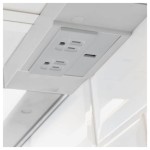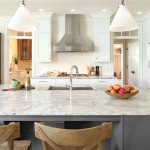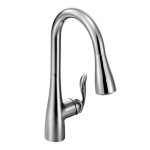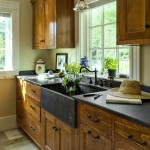Pendant Lights For Kitchen Sink: Illuminating Function and Style
Pendant lights installed above a kitchen sink serve as a crucial element in both the functionality and aesthetics of a kitchen space. They offer targeted illumination for tasks such as washing dishes, food preparation, and general cleaning, while simultaneously contributing to the overall ambiance and design of the area. Choosing the right pendant light requires careful consideration of factors like size, style, brightness, and mounting height to ensure optimal performance and visual appeal.
Importance of Proper Kitchen Sink Lighting
Adequate lighting is paramount in the kitchen, particularly at the sink. This area is frequently used for tasks that require precision and attention to detail. Insufficient or poorly positioned lighting can lead to eye strain, increased risk of accidents, and an overall unpleasant working experience. Pendant lights effectively address these issues by providing a focused and direct light source directly above the workstation. This targeted illumination allows for clear visibility, enhancing safety and efficiency when performing tasks at the sink.
Furthermore, kitchens often rely on a combination of ambient, task, and accent lighting. While ambient lighting provides general illumination for the entire room, task lighting, like pendant lights over the sink, focuses specifically on areas where work is performed. This layered approach to lighting ensures both adequate illumination for practical purposes and a comfortable and inviting atmosphere throughout the kitchen.
The brightness and color temperature of the light are also significant considerations. A light that is too dim can strain the eyes, while a light that is too harsh can create glare and discomfort. A color temperature that closely mimics natural daylight is generally preferred for task lighting, as it provides the most accurate color rendering and reduces eye fatigue. The selection of appropriate wattage and bulb type will contribute significantly to the overall effectiveness of the pendant lighting above the kitchen sink.
Factors to Consider When Selecting Pendant Lights
Choosing the correct pendant lighting for a kitchen sink involves a multifaceted assessment. Several key factors must be carefully evaluated to ensure that the selected fixtures meet functional requirements while complementing the overall aesthetic of the kitchen. These factors encompass size, style, brightness, material, and mounting considerations.
Firstly, the size of the pendant light should be proportional to the size of the sink and the surrounding kitchen space. A pendant that is too large can overwhelm the area, while one that is too small might not provide adequate illumination. Consider the width and depth of the sink, as well as the height of the ceiling, when determining the appropriate dimensions of the pendant. In general, for a standard-sized kitchen sink, a pendant light with a diameter of 8-12 inches is often sufficient. For larger sinks or islands incorporating sinks, multiple smaller pendants or a larger, wider fixture might be more suitable.
Secondly, the style of the pendant light should harmonize with the overall design of the kitchen. Pendant lights are available in a wide array of styles, ranging from modern and minimalist to traditional and ornate. Consider the existing cabinetry, countertops, and appliances when selecting a pendant style. For instance, a sleek, chrome pendant light might complement a modern kitchen with stainless steel appliances, while a rustic, wrought-iron pendant light might be more appropriate for a farmhouse-style kitchen. The selected style should contribute to the overall cohesive design of the space.
Thirdly, the brightness of the pendant light is a critical factor in ensuring adequate task lighting. The amount of light required will depend on the size of the sink area and the specific tasks that will be performed there. Opt for a light fixture that accommodates bulbs with sufficient wattage to provide ample illumination. Consider using LED bulbs, which are energy-efficient and long-lasting, and offer a range of brightness and color temperature options. The lumen output of the bulb, rather than the wattage, is a more accurate measure of brightness. Aim for a lumen output that is sufficient to provide clear visibility without creating glare.
Fourthly, the materials used in the construction of the pendant light should be durable and appropriate for the kitchen environment. Consider materials that are easy to clean and resistant to moisture and corrosion. Glass, metal, and ceramic are popular choices for kitchen pendant lights. Glass shades can diffuse the light and create a softer glow, while metal shades can provide more direct and focused illumination. The finish of the materials should also be considered, ensuring that it complements the other fixtures and finishes in the kitchen.
Lastly, the mounting height of the pendant light is crucial for both functionality and aesthetics. The bottom of the pendant should be positioned at a height that provides adequate illumination without obstructing the view or interfering with tasks performed at the sink. A general guideline is to hang the pendant approximately 30-36 inches above the countertop. However, this may need to be adjusted depending on the height of the ceiling and the size of the pendant. It is important to ensure that the pendant is not hung too low, as this can create a visual barrier and make the sink area feel cramped. Conversely, if the pendant is hung too high, it may not provide sufficient task lighting.
Pendant Light Styles and Materials
The vast array of pendant light styles and materials offers homeowners a wide range of options to suit their individual tastes and kitchen designs. Understanding the characteristics of different styles and materials is crucial for making an informed decision that complements the overall aesthetic and functional needs of the space.
Modern pendant lights are characterized by their clean lines, minimalist designs, and use of contemporary materials such as brushed nickel, stainless steel, and glass. These pendants often feature geometric shapes and understated elegance, making them ideal for modern and contemporary kitchens. They often offer adjustable height options and utilize LED technology for energy efficiency and long-lasting performance.
Traditional pendant lights evoke a sense of classic elegance and timeless appeal. They often feature ornate details, such as intricate carvings, decorative glass shades, and warm metal finishes like bronze or brass. Traditional pendants can add a touch of sophistication and charm to a kitchen, particularly in more formal or traditionally styled homes. These pendants may incorporate elements like fabric shades or crystal accents, adding to their visual richness.
Industrial pendant lights draw inspiration from factory and warehouse lighting, featuring exposed hardware, raw materials, and a rugged aesthetic. These pendants often incorporate metal cages, exposed bulbs, and distressed finishes, creating a unique and edgy look. Industrial pendants are a popular choice for kitchens with an industrial or loft-style design, adding character and a sense of history to the space.
Farmhouse pendant lights embrace a rustic and charming aesthetic, often featuring natural materials like wood, woven rope, and galvanized metal. These pendants evoke a sense of warmth and comfort, making them ideal for farmhouse-style kitchens. They may incorporate elements like mason jar shades, vintage-inspired hardware, and neutral color palettes, contributing to their cozy and inviting feel.
The materials used in pendant light construction play a significant role in their appearance, durability, and performance. Glass shades offer a wide range of styles, from clear and transparent to frosted and colored. Glass can diffuse light and create a softer glow, while allowing ample light to pass through. Metal shades, often made of steel, aluminum, or brass, provide more directed and focused illumination. Metal is a durable and versatile material that can be finished in a variety of colors and textures. Fabric shades add a touch of warmth and texture to pendant lights, creating a softer and more inviting atmosphere. Fabric shades are available in a wide range of colors and patterns, allowing for customization and personalization.
The choice of materials should also be guided by practical considerations, such as ease of cleaning and resistance to moisture. In a kitchen environment, where spills and splatters are common, it is important to choose materials that are easy to wipe down and maintain. Materials that are resistant to corrosion are also essential, particularly in areas that are exposed to moisture, such as the sink area.
Ultimately, the selection of pendant light styles and materials should be based on a combination of personal preferences, the overall design of the kitchen, and practical considerations. By carefully evaluating these factors, homeowners can choose pendant lights that not only provide adequate illumination for the kitchen sink but also enhance the overall aesthetic appeal of the space.

Laurel Steel Pendant Light
:strip_icc()/1V0A9434_ACDR01_preview-0249e6022cef405f90141e260fd57730.jpg?strip=all)
26 Kitchen Lighting Ideas That Make A Statement

Hot Trends In Kitchen Lighting We Expect 2024 Steel Co

Best Over The Sink Kitchen Lighting Ideas Lightlady Studio

Best Over The Sink Kitchen Lighting Ideas Lightlady Studio

Kitchen Maximizes Space Style And Storage

Lighting Over Kitchen Sink Design Ideas

7 Above The Sink Kitchen Lights Allisa Jacobs

7 Above The Sink Kitchen Lights Allisa Jacobs

17 Kitchen Above Sink Lights Ideas Light








